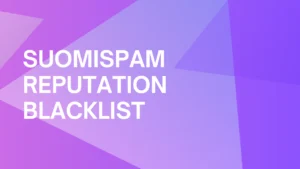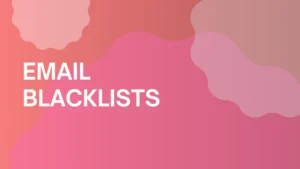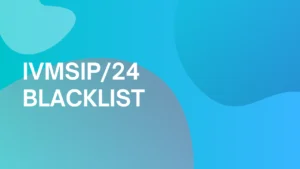
SEM Fresh Blacklist: What Is It and How To Remove Yourself From It
The SEM Fresh Blacklist is a real-time blocklist that updates frequently, flagging IP addresses involved in suspicious or spam-like activity. Being listed here can damage your email deliverability, so it’s important to understand how this blacklist works and how to address the issue. This article will guide you through:
- Preventive measures to avoid future blacklisting and make sure your emails reach their recipients successfully
- How the SEM Fresh Blacklist identifies problematic IP addresses
- Steps to check if your IP is listed and how to remove it
What is a SEM Fresh Blacklist?
The SEM (Spam Eating Monkey) Fresh Blacklist is considered a “Right-hand Side Blacklist” (RHSBL).
A RHSBL is a unique database that contains domain names that are spam. This type of blacklist differs from others because it contains domain names instead of IP Addresses.
SEM Fresh is a RHSBL because it is made up of numerous domain names. It focuses on sending real-time information on both IP Addresses and domain names in the effort to stop unsolicited bulk email (UBE).
How Do I Find Out If I Am On The SEM Fresh Blacklist?
The easiest way for you to determine if you are on a blacklist is to simply sync an inbox under the domain in question to our platform, Warmup Inbox.
Every inbox synced to Warmup Inbox gets run by the 24 most common IPv4 blacklists to determine if your inbox and associated domain has been listed on one. By doing this, you will receive up to date information on whether or not you have been blacklisted.
How Can I Remove Myself From The SEM Fresh Blacklist?
The SEM Fresh Blacklist does not allow the user to request to be removed. The SEM Fresh Blacklist is made up of domains that were registered in the last 5 days and they automatically expire after 5 days.
The domains can be .AERO, .BIZ, .COM, .INFO, .NAME, .NET, .PRO, .SK, .TEL and .US TLDs. There is also no way to expedite this process.
How do I reduce my risk of getting onto the SEM Fresh Blacklist?
The best way to avoid getting listed on a blacklist is to engage in proper email practices such as…
- Verify all email addresses before attempting outreach
- Avoid sending unnecessary, unsolicited emails
- Avoid the use of spam words within your email drafts
- Keep your sending volume to a minimum (30-50 a day if your inbox has been warmed up with an Email Warmup Service for at least 30 days)
- Avoid sending emails in bulk
Related Terms
- Domain Name: A unique name of an organization or person on the Internet.
- Unsolicited Bulk Email (UBE): Email sent to a large audience without their consent.
- UCEPROTECTL3 Blacklist: A specific type of blacklist that targets IP addresses and subnets from Internet Service Providers known for facilitating spam. This list includes individual IP addresses or entire IP ranges if they are associated with sending unsolicited bulk email (UBE). The goal is to encourage ISPs and network administrators to educate their users about preventing email abuse.



